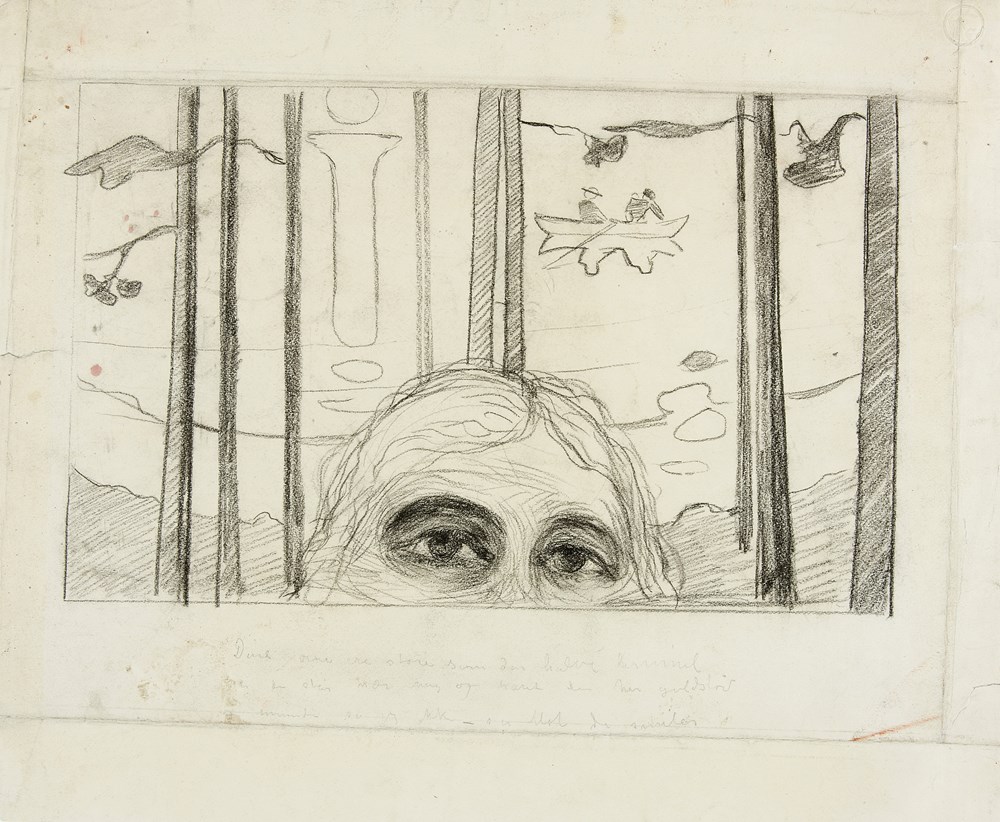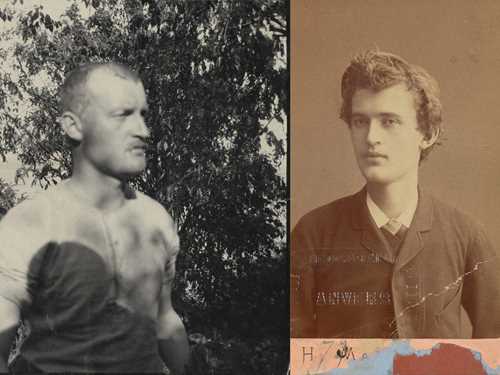Exhibition
“All is life” is a quotation from one of the biggest mysteries in the museum’s collection. It is a large, heavy album in which Edvard Munch collected drawings, prints and texts written in colourful letters. No one knows why he created this album. Was it a book proposal? Or was it an attempt to organise his ideas?
What we do know is that he worked on the album for several decades, and that it was probably never completed. The most astonishing part of its content is perhaps Munch’s own texts about love, jealousy, life and death, composed in large, colourful lettering.
Munch kept most of his works for himself. To him, a small, unfinished drawing could be just as significant as some of the works we are most familiar with today. Munch preferred his pictures to be viewed within a context, believing that only then would they gain a unique resonance.
The Tree of Knowledge takes us into the heart of Munch’s artistic project and draws attention to the diversity of the collection he left behind – not a completed narrative of famous masterpieces, but a lifetime’s work that also encompasses the unfinished, experimental and mysterious.
From the exhibition
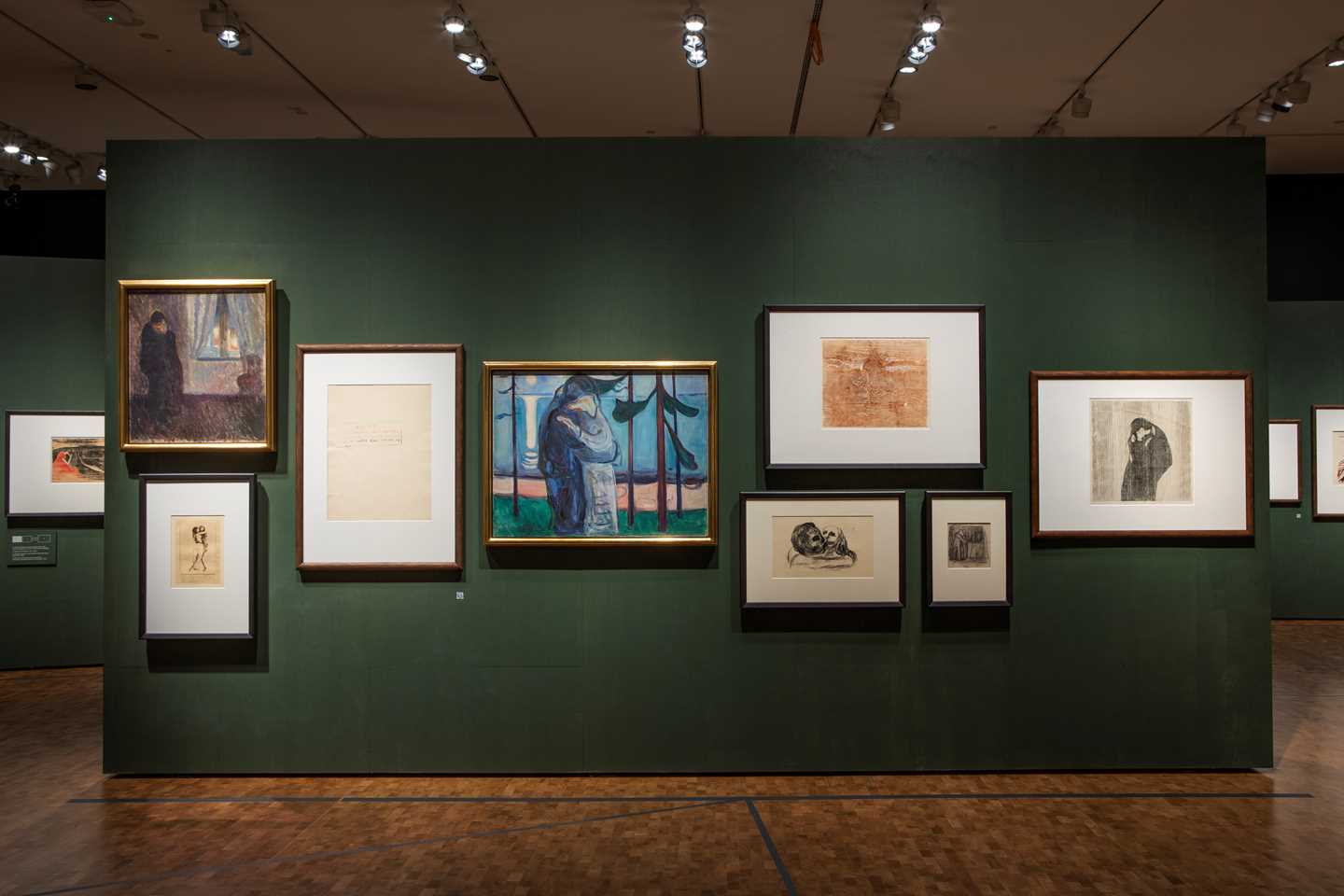
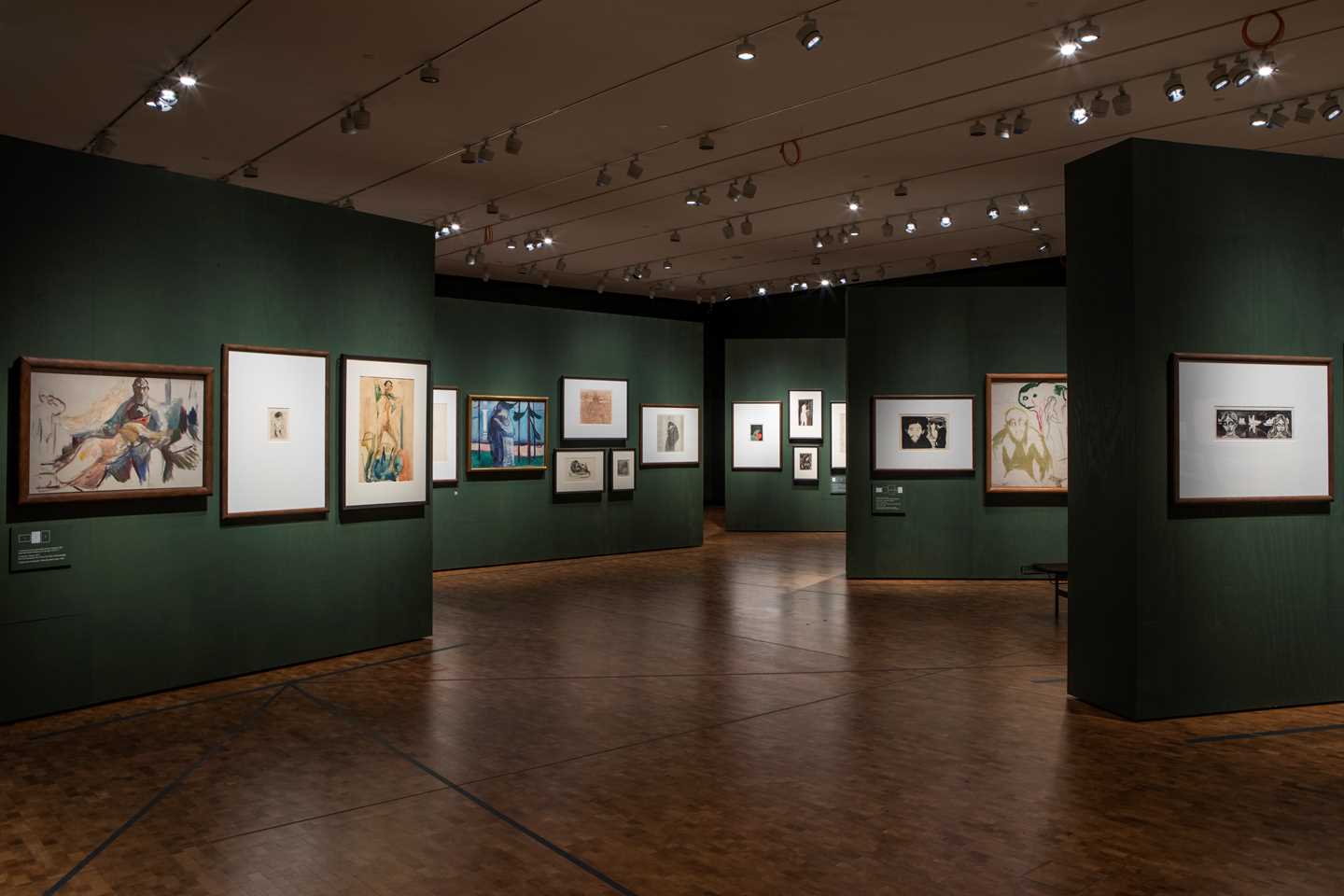

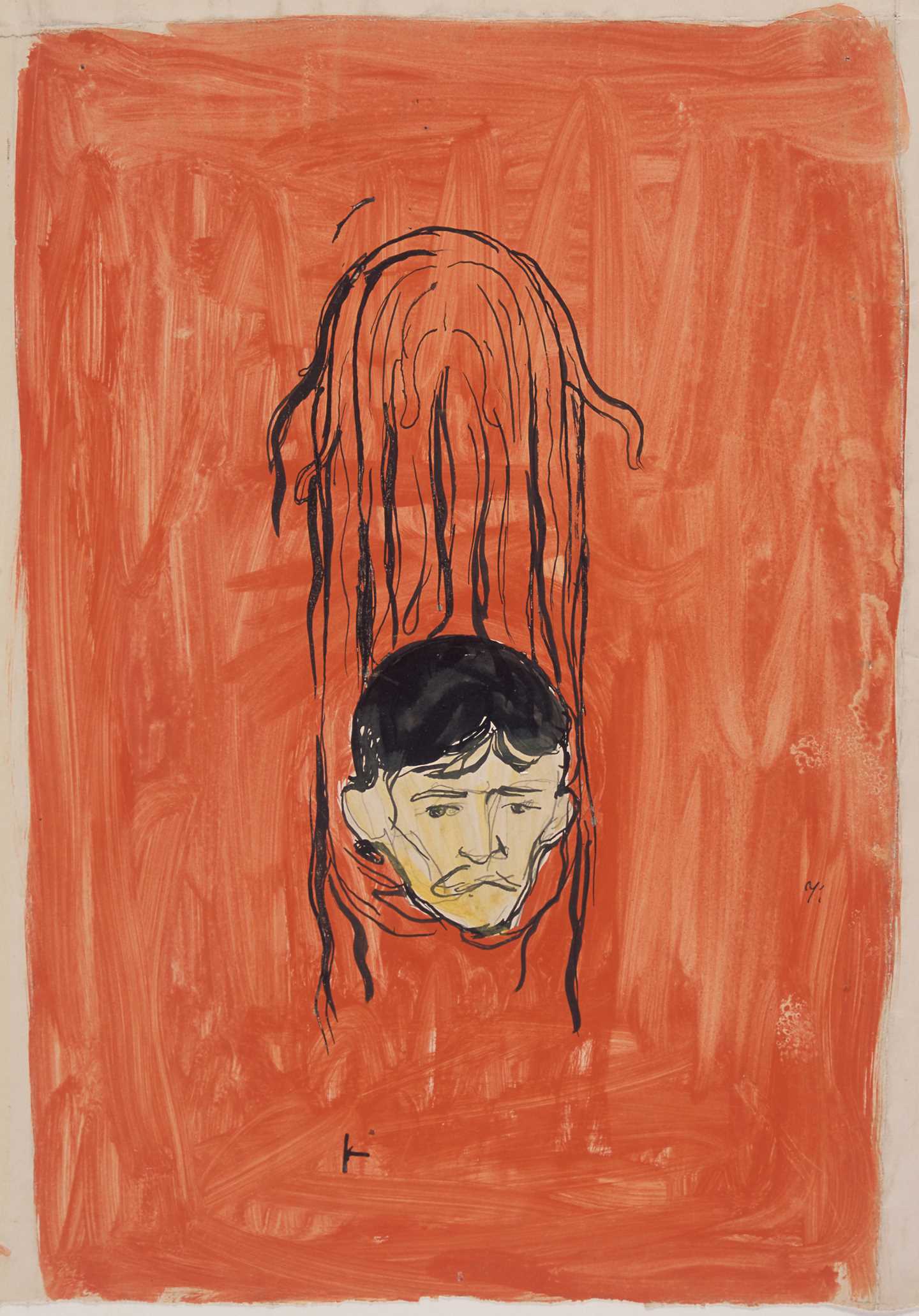
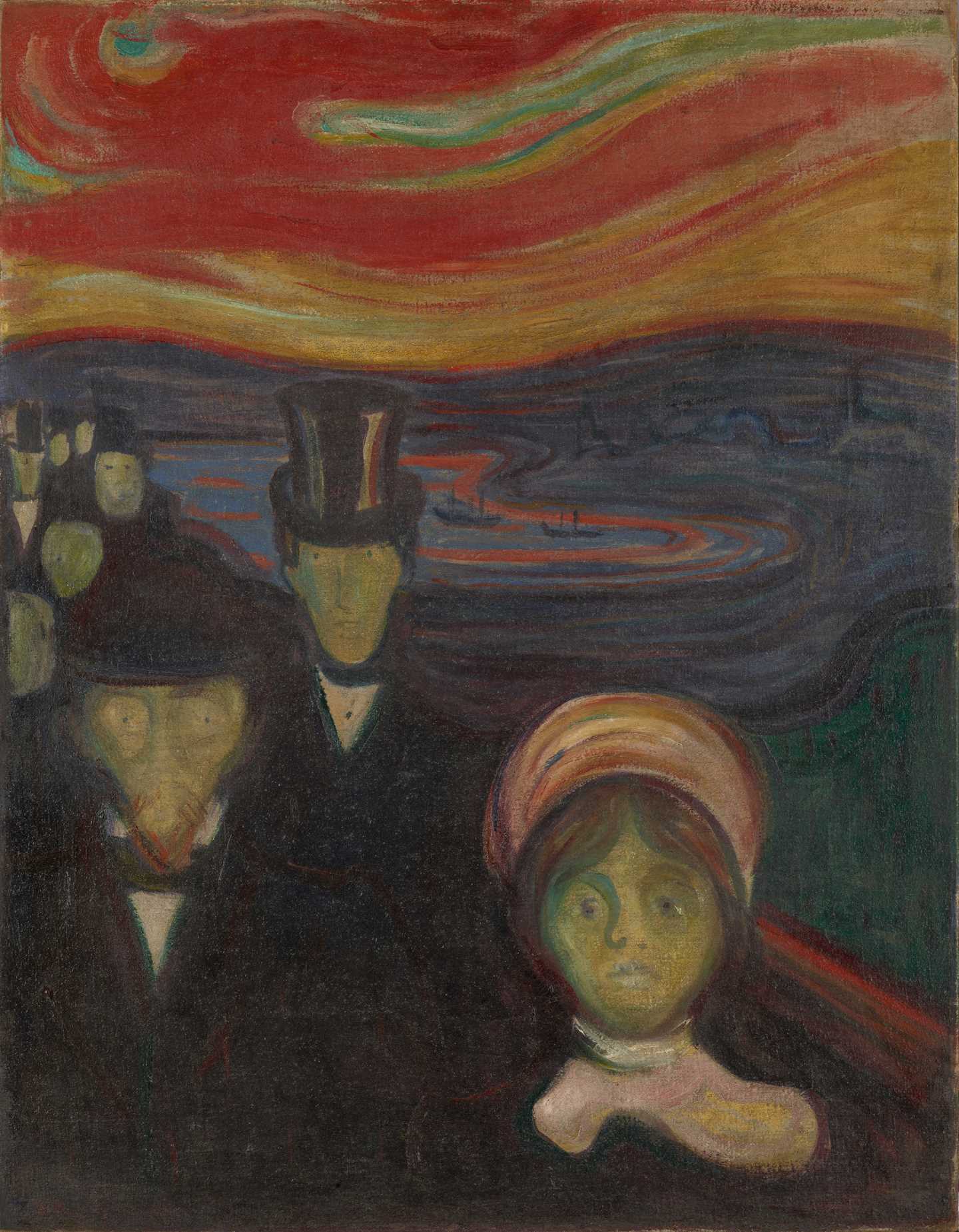
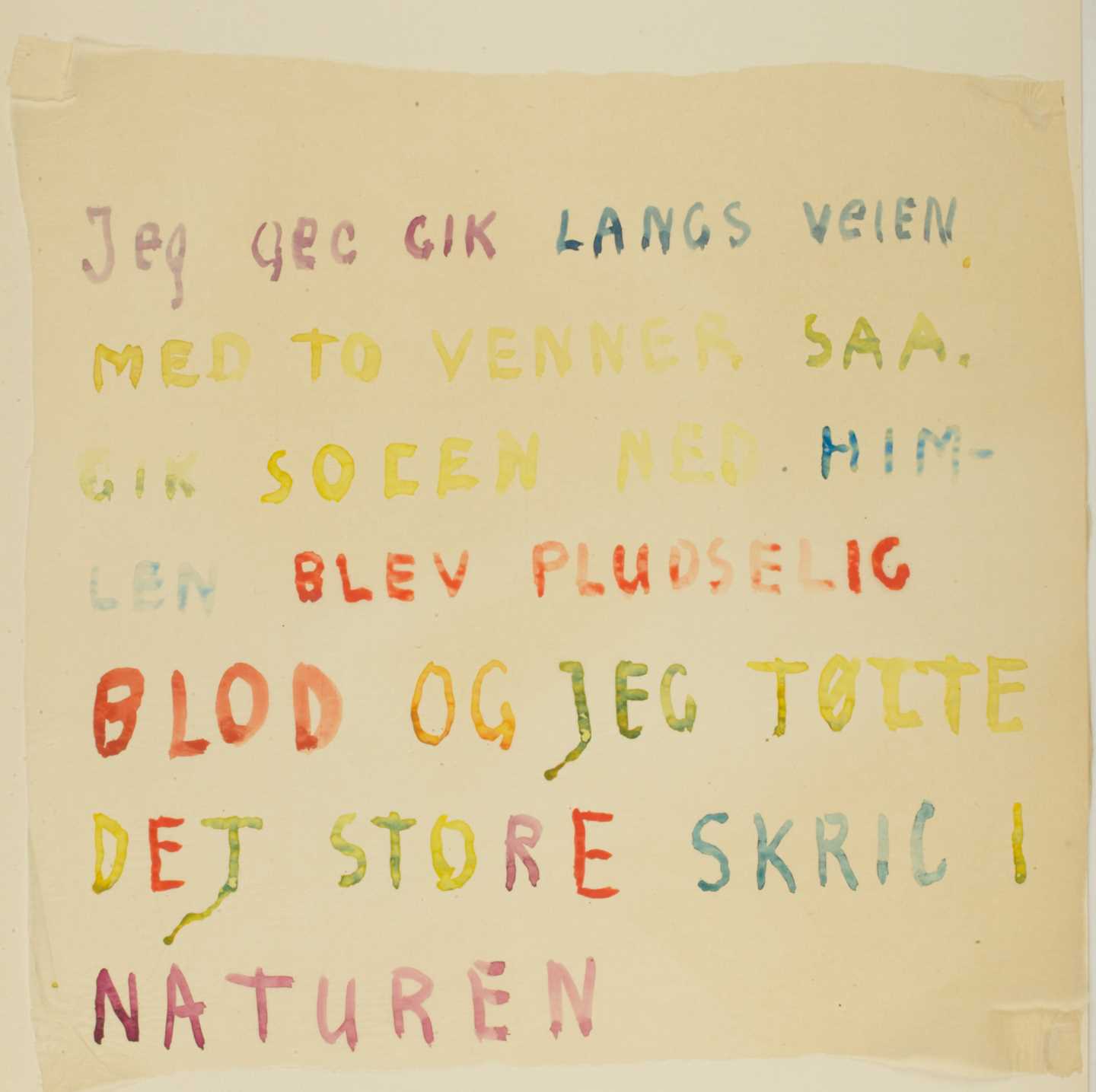
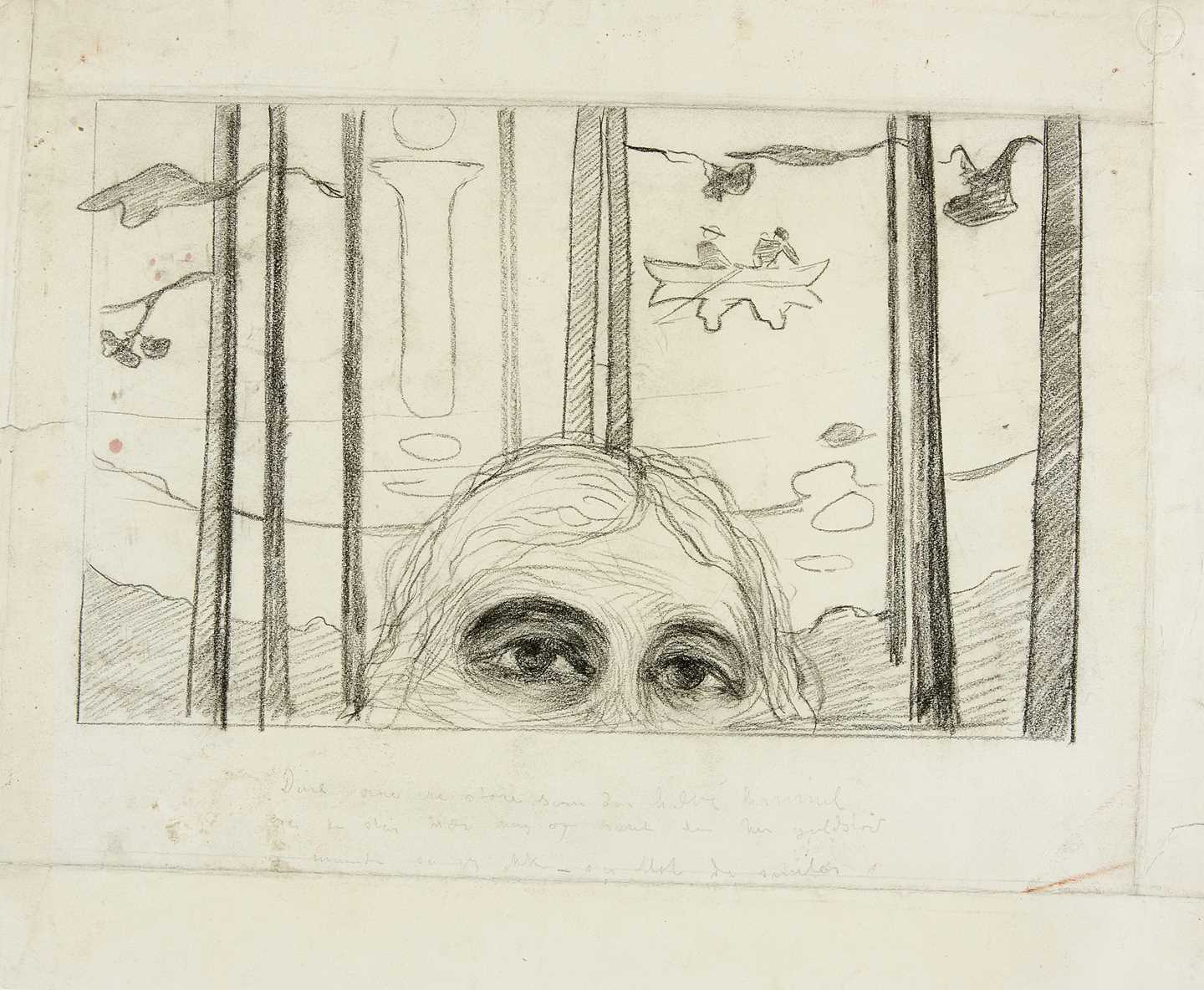
- The exhibition is made by
